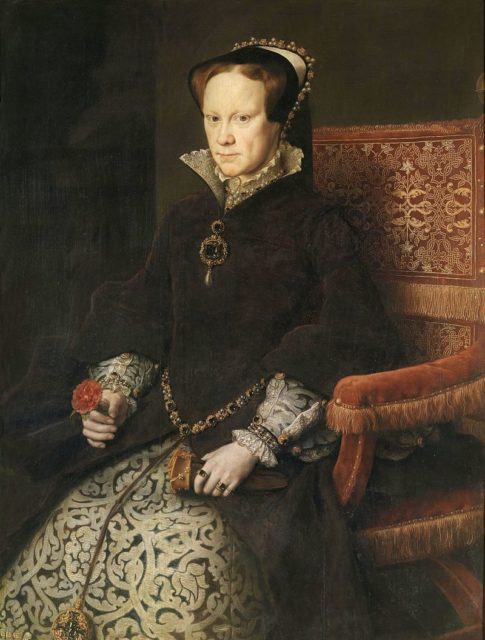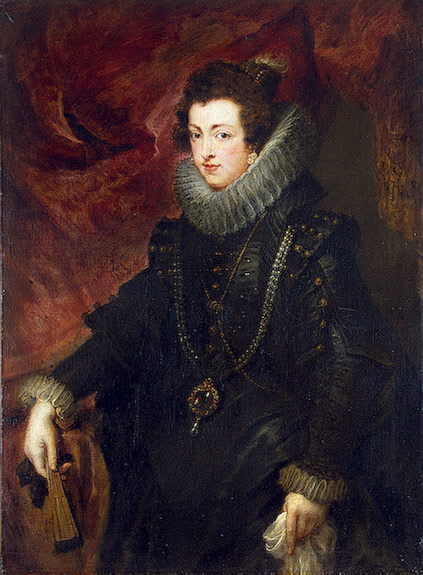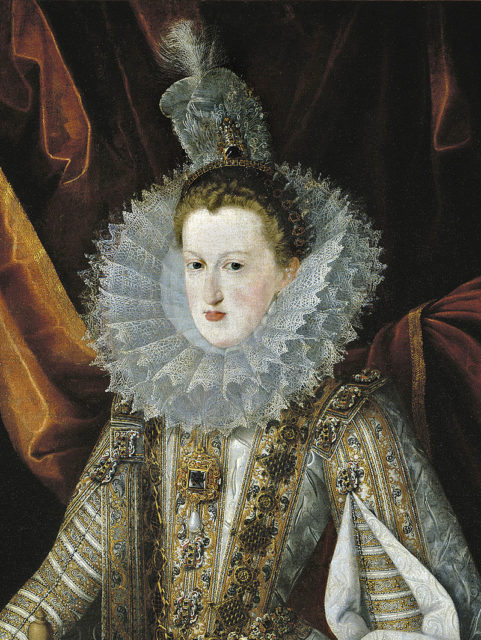Perhaps the most famous pearl in the world is La Peregrina. It entered historical annals in the 16th century, when the Hapsburg European empire was at its peak and its dominions were seemingly endless, and remained in the hands of the Spanish monarchy until a Bonaparte took possession in the 19th century.
The pearl was found on the coast of the isle of Santa Margarita in Panama. One story has it that an African slave found the jewel and received his freedom as a reward. But others believe that the pearl was found in 1513, when there were not yet African slaves on the island. The dreadful history of slavery in the “New World” was then in its earliest days.

Whomever found the pearl then gave it to Don Pedro de Temez, the administrator of the Spanish colony. The pearl’s name, translated, means “the Wanderer” or “the Pilgrim.” The first place it wandered to was Europe, where the complicated relationship between England and Spain played out.
Elizabeth Taylor misplaced La Peregrina #pearl #necklace in a Las Vegas hotel, only to find it in her dog’s mouth! pic.twitter.com/kalDIrFc0m
— Suttons & Robertsons (@SandR_UK) July 21, 2015
Its original weight was 223.8 grains (55.95 karats/ 11.2g), and at that time was recognized as La Peregrina was the largest pearl ever found. La Peregrina became smaller in 1913 when it had to be cleaned and drilled but it remains one of the most perfectly symmetrical pearls in the world.

Temez carried the pearl back to Europe and gave it to Prince Philip, son of the Hapsburg emperor, Charles V. When Philip, later King of Spain, made a dynastic marriage with his second-cousin, Queen Mary of England, he gave it to her as a present. Mary, madly in love with her 11 years’ younger husband, wore it as a pendant to a brooch. The most famous portrait of her with the pearls can be seen in the Prado Museum in Madrid, made by Antonis Mor. There are other portraits of Mary I by various artists, one of which can be seen in the National Portrait Gallery in London, by Hans Eworth.
A gift from Burton to Taylor but La Peregrina pearl has an even more fascinating past https://t.co/rR9VuIF4ZO #kprs pic.twitter.com/FoqEpnqQrK
— AceJewelleryLeeds (@AceJewelleryUK) June 16, 2016
When Mary died, her half-sister, Elizabeth I, succeeded. She did not honor all of her sister’s requests made in the will, but Elizabeth did return the pearl to the Spanish Crown. Years later, of course, Philip sent the Spanish Armada to topple his onetime sister-in-law. The fourth and last of his wives, who presumably wore the pearl, was Philip’s niece, Anna of Austria, 23 years younger than him.
#THA La Peregrina Pearl belonging to Mary I (it also once belonged to actress Elizabeth Taylor). pic.twitter.com/YIFaAIXV2z
— History Gal (@HistoryGal_) July 28, 2016
La Peregrina remained in Spain as part of the crown jewels for 250 years. It was worn by several queens as a favorite ornament. The wife of Philip III, Margaret of Austria, wore the pearl in 1605, at a celebration of the peace between England and Spain. Portraits by Diego Velazques show the pearl also being worn by Elizabeth of France and later, Mariana of Austria, the first and second wives of Philip IV.

In 1808, Napoleon Bonaparte’s brother Joseph was installed as king of Spain. He ruled, all the time very unpopular, for five years until the French-led forces were defeated by the English-led coalition at the Battle of Vitoria. When he abdicated and left the kingdom, Joseph took some of the crown jewels with him, including the pearl. Later, Joseph left it to the future Napoleon III of France, who was his nephew. During the time that Napoleon III, in poor health and driven out of France, lived in England, he needed money and sold the jewel to James Hamilton, Duke of Abercorn.
Liz wearing “La peregrina pearl in the necklace designed for it, by “Cartier” wow ! ;) pic.twitter.com/9UsxJP8ghb
— Victoria Keir (@victoria_keir67) June 21, 2016
It is said that the pearl was so heavy in the necklace it was set in that it fell out of that setting on two different occasions. The first time, it was lost in Windsor Castle, and the second time at Buckingham Palace during a ball. Until 1969, the Hamilton family owned the pearl, but it was that year that they sold it at auction in London. It was bought by Richard Burton for $37, 000 at the Sotheby’s auction as a gift for his wife Elizabeth Taylor for Valentine’s Day. The Burtons were famously obsessed with jewels and the bigger, the better.

Later, Taylor gave the pearl to Cartier to re-design it, and the jeweler added diamonds, pearls, and rubies. Also, Taylor reportedly lent the pearl to the Smithsonian Institution for its “the Allure of Pearls” exhibition.In 2011, La Peregrina was sold for more than $11 million on the diamond necklace made by Cartier. It was on auction at Christie’s in New York as part of Elizabeth Taylor’s collection after her death.
Read another story from us: The Hope Diamond is perhaps one of the most famous diamonds in history
Unsubstantiated claims have been made about a second large treasure, the Pearl of Kuwait, as being the real Mary Tudor Pearl. It is bigger by a small degree than La Peregrina and is now owned by the Jewellers Symbolic & Chase. Supposedly the pearl was first worn by Emperor Charles V’s wife, Isabella, who was the mother of Philip II, and it made its way to Mary I of England that way. The truth of the pearls may never be fully entangled.
